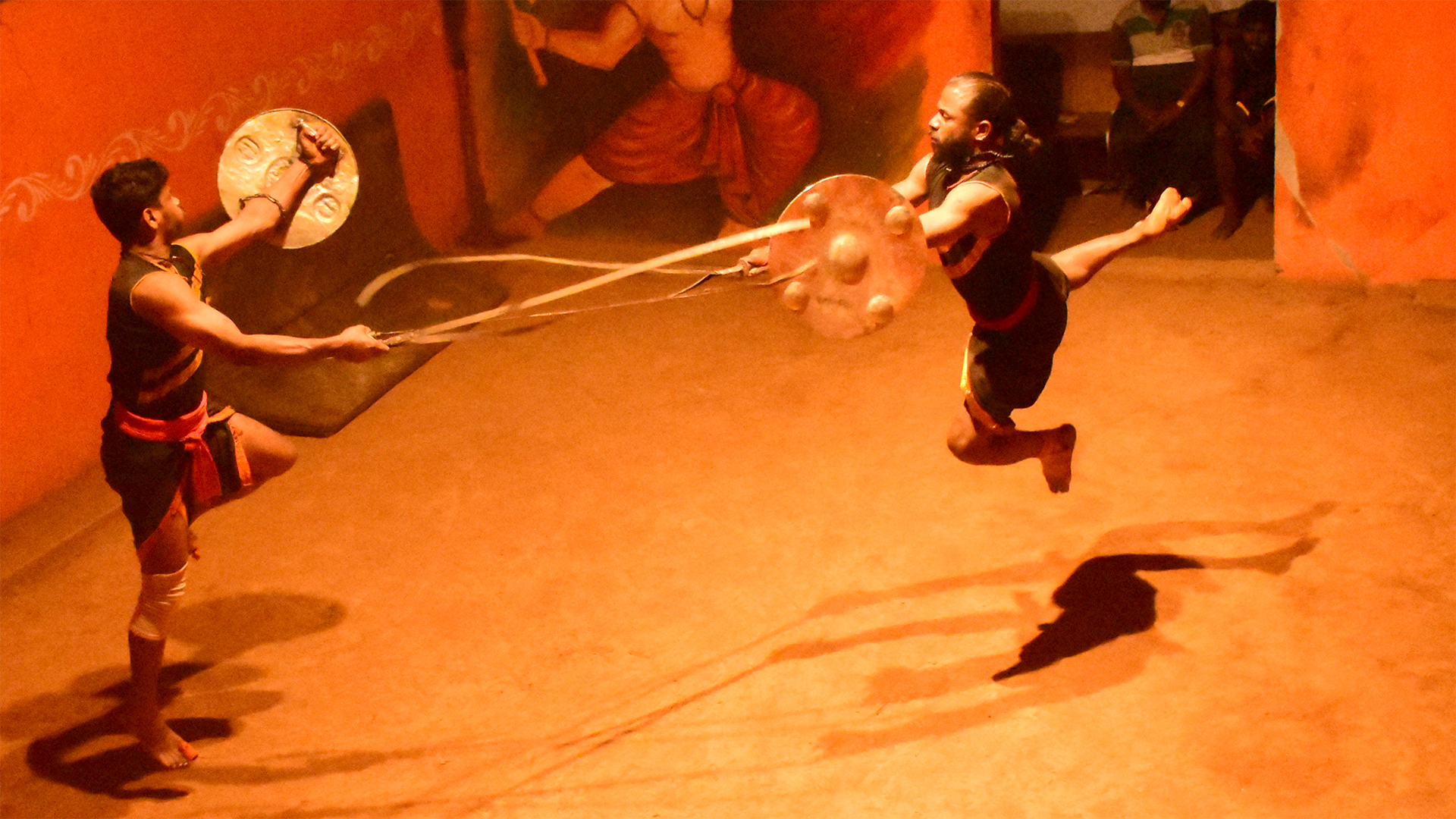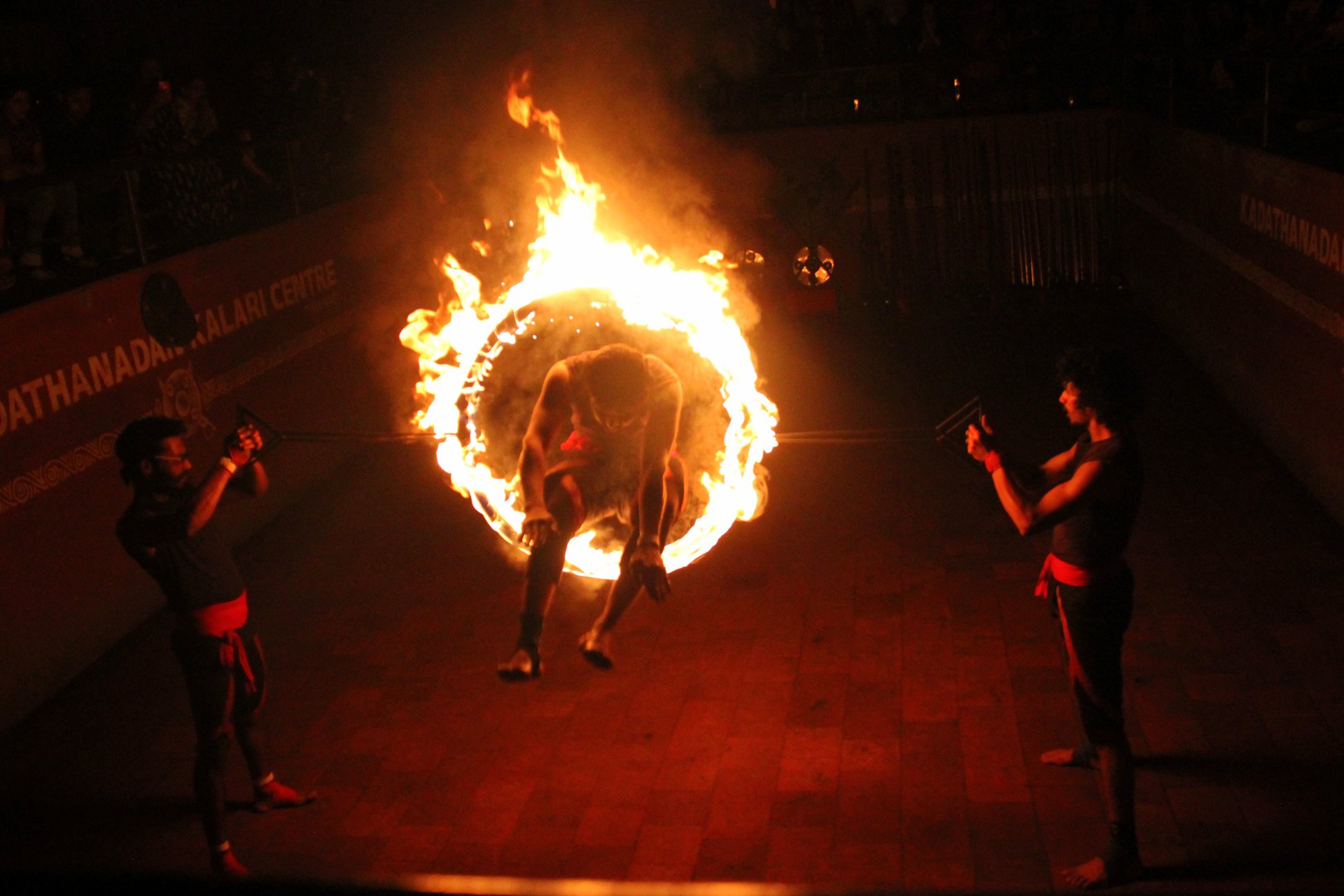I discovered Kalaripayattu in Kumily in Kerala. The small spice trading town, surrounded by tea gardens, seemed like the perfect place to enjoy a cultural evening and accordingly, I booked a Kalaripayattu show for myself. The programme was held at Kadathanadan Kalari And Navarasa Kathakali Center and lasted about an hour. It was an hour of dazzling coordination of mind and body. Performer enthralled us with their exquisite movements, and dazzling play with sticks, swords, and fire. I was awestruck. Later that night, I returned to my hotel to learn about this amazing art form and discovered Kalaripayattu an ancient form of martial arts that dates back to 300 B.C. Indigenous to Kerala, this art form combines physical combat techniques, self-defense tactics, exercise routines, and spiritual elements. Derived from the words Kalari, meaning battleground, and Payattu, meaning martial arts training, Kalaripayattu mixes combat training with physical and mental conditioning. It is a multi-layered art form with several practices, including jumping, running, different acrobatic styles, and fighting with daggers, swords, spears, bows, and arrows.
Table of Contents
Kalaripayattu performance in Kumily
The show started with a couple of young warriors entering the arena: their heads held high and their bodies taut. One of them lit the candles at a votive altar and the lights dimmed as they started with Guruvandhanam, warm-up movements in the direction of the four cardinal points. Silence fell amongst the audience and all of a sudden, a tense music began. The warriors in the arena began to fight freestyle with stunts and daring acrobatics. They gradually proceeded to fight with long sticks, spears, swords, and shields. It was a simple demonstration of exquisite timing and amazing coordination that were proof of the years of rigorous training that Kalaripayattu required. The finale was even more bedazzling and the audience held its breath as the Kalari warriors fought with fire.
Revival of Kalaripayattu
I was stunned. Time flew so fast that I did not even notice its passage and there was a pin-drop silence during the entire performance. That night, I read online that in the olden days, all children in Kerala from the age of seven were taught Kalaripayattu as a fundamental part of their education. This changed during the British age and Kalari was passively oppressed to take away from the Indians an instrument of rebellion and struggle against the foreign ruler. Incidentally, the classical Odissi dance faced the same fate under the rule of the British rulers, who being Christians, considered this dance form to be too sensual. Thankfully, both Kalaripayattu and Odissi continued to be practised in secret and they both came back into vogue after India´s independence from the British. Today, no Kerala cultural evening is complete without a performance of this amazing ancient martial art form, Kalaripayattu. Have you seen it?

Two Kalaripayattu performers Photo Credit Wikimedia Commons

A back pose of a Kalaripayattu warrior getting ready to fight his opponent Photo Credit – Pixabay

Photo credit Unsplash
Follow the rest of the Kerala series
- KERALA CUISINE, A MEDLEY OF SUGAR AND SPICE
- TAMIL NADU KERALA ITINERARY FOR 2 WEEKS
- CULTURAL KERALA TRIP ITINERARY FOR 1 WEEK
- ART AND CULTURE OF KERALA
- THEYYAM, WHEN GODS COME DOWN TO EARTH
- KUMILY, THE LAND OF KALARIPAITU, WILDLIFE, SPICES AND TEA
- THE PULIKALI TIGER DANCE OF KERALA
- A COMPLETE KERALA BACKWATERS GUIDE
- GUIDE TO VALLAM KALI OR THE FAMOUS KERALA BOAT RACE
- MY KERALA TRAVEL MEMORIES
RESPONSIBLE TRAVELING-BECAUSE I CARE

